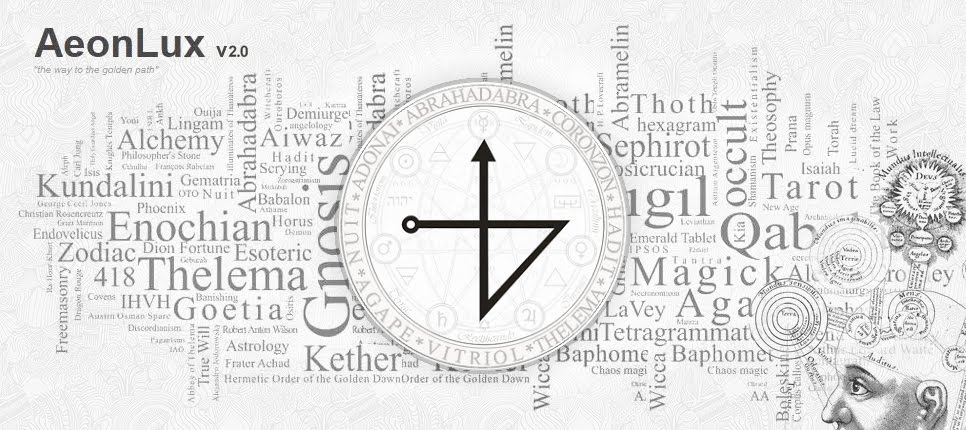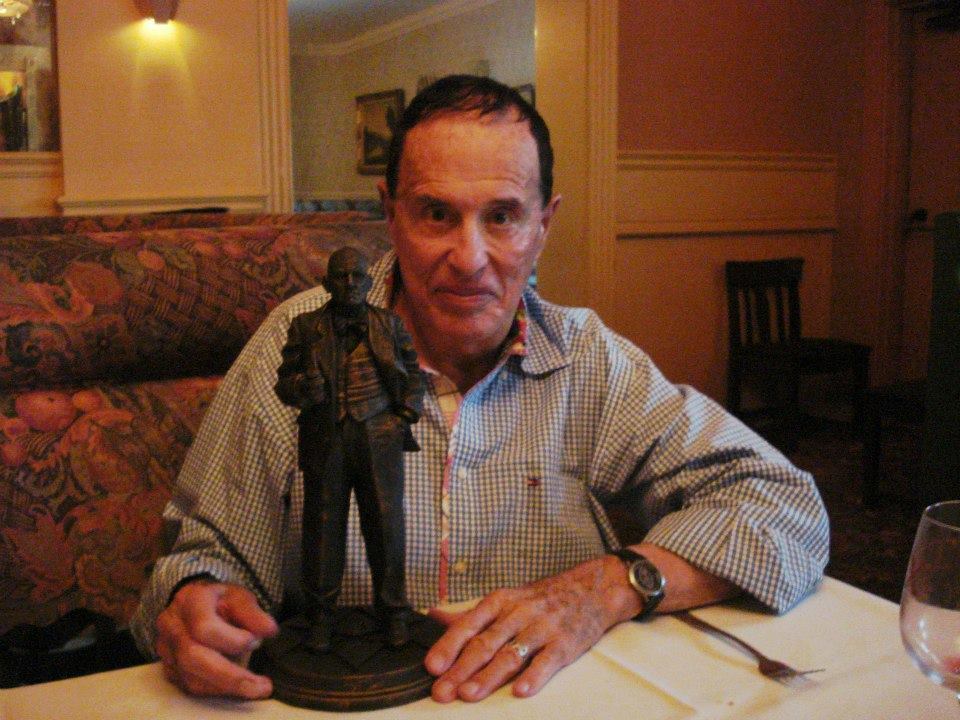
The Cult of Crowley
Jimmy Page bought his house; the Beatles put him on the cover of Sgt. Pepper; Ozzy called him “Mr.” — but who exactly was Aleister Crowley, the “Great Beast 666”? TIDAL takes a deep dive into the legendary occultist’s strange, dark world.
by Shaun BradyCredit: Fin Costello/Redferns/Getty Images.
When Ozzy Osbourne posed the question “What went on in your head?” to one “Mr. Crowley,” on his 1980 solo debut Blizzard of Ozz, it was taken by many as absolute proof of the singer’s satanic tendencies. The late British occultist, poet and magician Aleister Crowley had been dubbed “the wickedest man in the world” and “a man we’d like to hang” by the British press during the first half of the 20th century. Even before his infamous bat-biting and Alamo urination incidents, the ex-Black Sabbath frontman seemed well on his way to inheriting both mantles.
But Osbourne’s song, co-written with guitarist Randy Rhoads and bassist Bob Daisley, sprang from honest curiosity rather than some infernal discipleship. “I never did this black-magic stuff,” Ozzy told Rolling Stone in 2002, insisting that he and his Sabbath bandmates “couldn’t conjure up a fart. … The reason I did ‘Mr. Crowley’ … was that everybody was talking about Aleister Crowley.”
Born in 1875, Crowley was raised in a fundamentalist Christian family and essentially spent his entire life repudiating their strict teachings. He was a polymath with a voracious appetite and an all-eclipsing ego who refused to be satisfied with anything short of godhood. He rose through the ranks and alienated himself from esoteric secret societies like the Hermetic Order of the Golden Dawn and the Ordo Templi Orientis, ultimately founding a religion known as Thelema and appointing himself its prophet.
Crowley’s study of “magick” — he added the k to differentiate his occult workings from simple illusion — led him on a path of experimentation that encompassed journeys to India and North Africa, sexual hedonism, drug abuse, sadomasochism and mysticism guided by his doctrine: “Do what thou wilt shall be the whole of the Law.”
That anything-goes dictum goes a long way towards explaining why Crowley — or at least his image — continues to enthrall musicians more than three-quarters of a century after his death in 1947. While Blizzard of Ozz served as many a young metalhead’s introduction to the name of Aleister Crowley (this writer included), it was far from the first time that the self-professed “Great Beast 666” had cast his spell on the rock world.
His bald visage appears in the upper-left-hand corner of the cover art for Sgt. Pepper’s Lonely Hearts Club Band, sandwiched between Indian guru Sri Yukteswar Giri and actress Mae West — appropriately enough, linking a spiritual leader and a sex symbol. Most famously, Led Zeppelin guitarist Jimmy Page spent a small fortune hoarding Crowleyana, including purchasing Boleskine, the magician’s dilapidated former home on Loch Ness.
Thelema was predicated on an approaching era in which the Egyptian deity Thmaist takes over from current ruler Horus, whose tenure Crowley referred to as the “reign of the crowned and conquering child” — an apt description of the lineage of rock idols anointed at an early age and frozen into perpetual adolescence. One of Crowley’s recent biographers, Gary Lachman, characterizes the Great Beast as “a colossal example of arrested development.” He cites the influence of Crowley’s self-centered philosophy on songs from Iggy Pop’s “I Need More” to the Doors’ “When the Music’s Over” and its declaration “We want the world and we want it now.”
Lachman, though a severe critic of Crowley’s more self-serving indulgences, is himself an example of his subject’s allure for the rock crowd. Prior to becoming an author and an expert on the occult, Lachman was known as Rock & Roll Hall of Famer Gary Valentine, the bassist for Blondie early in the band’s career. Although it was recorded after he left the band, he wrote the song “(I’m Always Touched by Your) Presence, Dear” under the sway of Crowley and other occultists. Its lyrics touch on theosophy, contacting “outer entities,” and the telepathic connection Lachman shared with his then-girlfriend.
It only took a generation after his passing for Crowley to transform from dangerous blasphemer to spiritual icon. His rebellion against established norms, advocacy for sexual freedom and spiritual questing all resonated with a counterculture shaking off the strictures of its elders. LSD guru Timothy Leary once claimed to be “carrying on much of the work that [Crowley] started,” as were “the ’60s themselves.” The opening lines to the Beatles’ “Tomorrow Never Knows” (“Turn off your mind / Relax and float downstream”) are borrowed from one of Leary’s books, but the astral-traveling sentiment could be traced back to Crowley.
Not to be outdone, the Rolling Stones also delved into occult studies. Mick Jagger and Keith Richards were mentored by the filmmaker and dedicated Thelemite Kenneth Anger, as reflected in “Sympathy for the Devil.” Jagger turned down the Lucifer role in Anger’s Lucifer Rising, but had scored and appeared in his Invocation of My Demon Brother. The cast list for Lucifer Rising ultimately included Jagger’s then-partner, singer Marianne Faithfull. Jimmy Page composed a score for the film that was ultimately rejected after a falling out with Anger (a habit the director shared with Crowley). The filmmaker ultimately turned to the Manson Family’s Bobby Beausoleil (a member of Arthur Lee’s band the Grass Roots, who became Love) to compose the soundtrack from his prison cell.
Page turned his attention to restoring Boleskine, commissioning artist Charles Pace to recreate the murals from Crowley’s Abbey of Thelema in Sicily (which had been restored by Anger, decades after Crowley’s eviction by Benito Mussolini). The grounds show up in the concert film The Song Remains the Same, and the album art for Led Zeppelin IV was illustrated with mystical symbols. Excluding the dubious accusations of backmasking that have long dogged “Stairway to Heaven,” the band’s lyrics borrow far more from Tolkien and American blues than from Crowley or his pagan peers.
Keyboardist and singer Graham Bond, whose band the Graham Bond Organisation was a launching pad for the likes of jazz-rock guitar hero John McLaughlin and Cream’s Jack Bruce and Ginger Baker, took his Crowley obsession to more tragic lengths. Albums like 1970’s Holy Magick and ’71’s We Put Our Magick on You are laced with references to Thelema and other esoterica, but Bond sank into mental illness, claiming to be Crowley’s son before throwing himself in front of a train in 1974.
David Bowie was dabbling in any number of fringe interests — Egyptian mysticism, the Kabbalah, the Nazi hunt for the Holy Grail — by the time he recorded Hunky Dory in 1971, and the Beast hardly escaped his notice. The lyrics for “Quicksand” begin, “I’m closer to the Golden Dawn / Immersed in Crowley’s uniform / Of imagery.” Even Sly and the Family Stone summoned Crowley, however inadvertently: “Everybody Is a Star” echoes Crowley’s “Every man and every woman is a star,” one of the opening lines of his The Book of the Law. The sentiment was in the air.
No genre has taken to Crowley quite like heavy metal, even if, as with Ozzy’s Gold-selling single, the understanding of the man and his gospel often seems tenuous at best. Though they took their name from an Italian horror movie, Black Sabbath also drew inspiration from a 1934 novel, Dennis Wheatley’s The Devil Rides Out, whose main villain was based on Crowley. A 1968 film adaptation laid the groundwork for a host of “high-society cult” narratives, from Val Lewton’s sardonic The Seventh Victim to Roman Polanski’s Rosemary’s Baby.
Iron Maiden, perhaps the most literarily inclined of metal bands, has evoked Crowley often. The title song from The Number of the Beast turns Crowley’s adopted numerals into a singalong, while the later “Moonchild” is based on Crowley’s 1917 novel of the same name. Lead singer Bruce Dickinson even penned a tongue-in-cheek 2008 horror film, called alternately Chemical Wedding or Crowley, in which the occultist is reincarnated through a modern-day Cambridge professor.
The title of Celtic Frost’s 1985 classic To Mega Therion is another of Crowley’s many pseudonyms — it’s Greek for “The Great Beast” — though it wasn’t until 20 years later that they directly cited his work, in the song “Os Abysmi Vel Daath.” Marilyn Manson’s “Misery Machine” charts a joyride “down Highway 666 … to the Abbey of Thelema.”
More experimental and industrial bands returned the embrace of Crowley to his actual philosophies rather than to his cartoonish depiction. Current 93 were virtual Crowley apostles, with founder David Tibet castigating the metal contingent for their misinterpretations in a 1983 article. Throbbing Gristle’s “United” features a chant of “Love is the law,” half of Crowley’s traditional sign-off, “Love is the law, love under will.” Killing Joke’s “The Fall of Because” took its title from Crowley’s writings, and Secret Chiefs 3, led by Mr. Bungle/Faith No More guitarist Trey Spruance, was named for the mysterious figures guiding humanity in belief systems including Thelema and the Golden Dawn.
You expect to find Crowley lurking in the shadows conjured by metal and industrial bands — genres traditionally drawn to the darkness. But his influence is widespread enough that even blue-eyed soul singer Daryl Hall evokes him on his 1980 solo album, Sacred Songs. “Without Tears,” the album’s closing track, is based on the posthumously published book Magick Without Tears.
In recent years, Crowley T-shirts have been spotted on both provocateurs (Tyler, the Creator) and non-diabolical pop stars (Kevin Jonas). A decade ago, Ciara could be seen in a matching shawl and boots that touted the Hermetic Order of the Golden Dawn. JAY-Z donned a hoodie emblazoned with “Do What Thou Wilt” in a behind-the-scenes clip of his post-apocalyptic video for “Run This Town” — itself accused, however unconvincingly, of smuggling occult imagery into the mainstream. The rapper Ab-Soul immersed himself in Crowley research for his 2016 LP Do What Thou Wilt.
Which might provide some glimmer of an answer to Ozzy’s conundrum. What really went on in Crowley’s head was the allure of the forbidden and transgressive, which isn’t as esoteric or unusual as we might want to believe.




